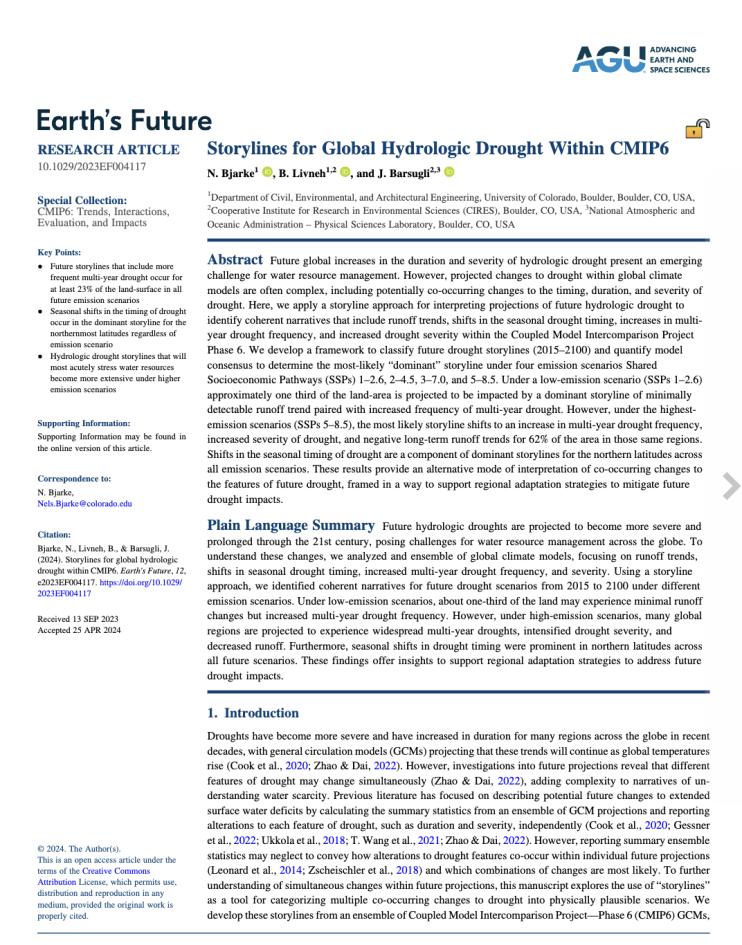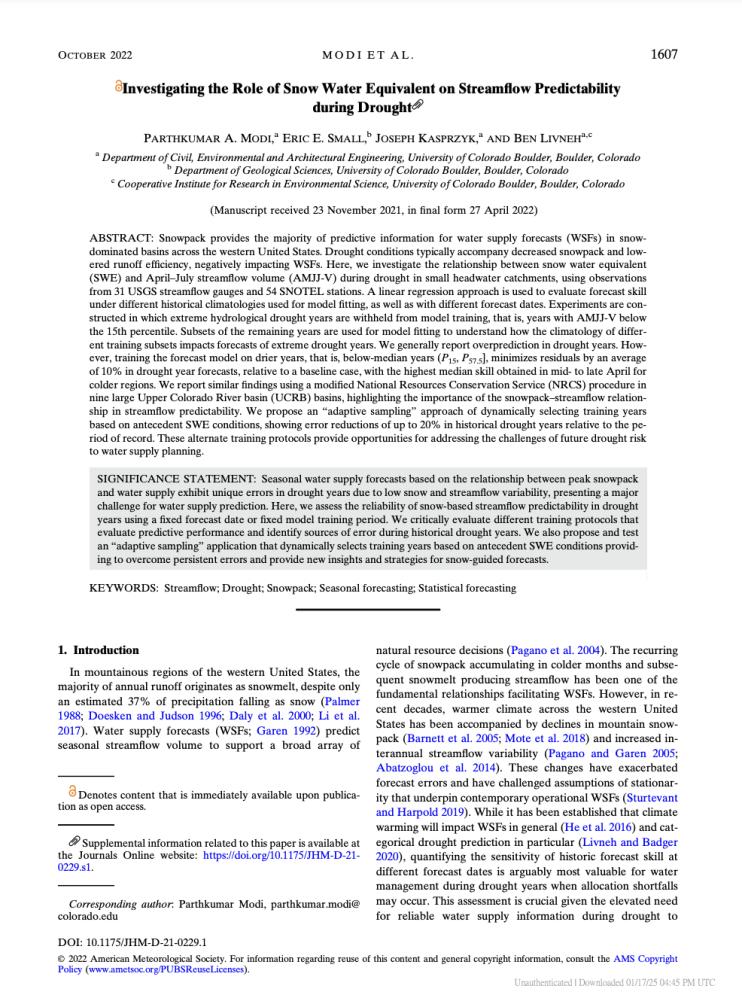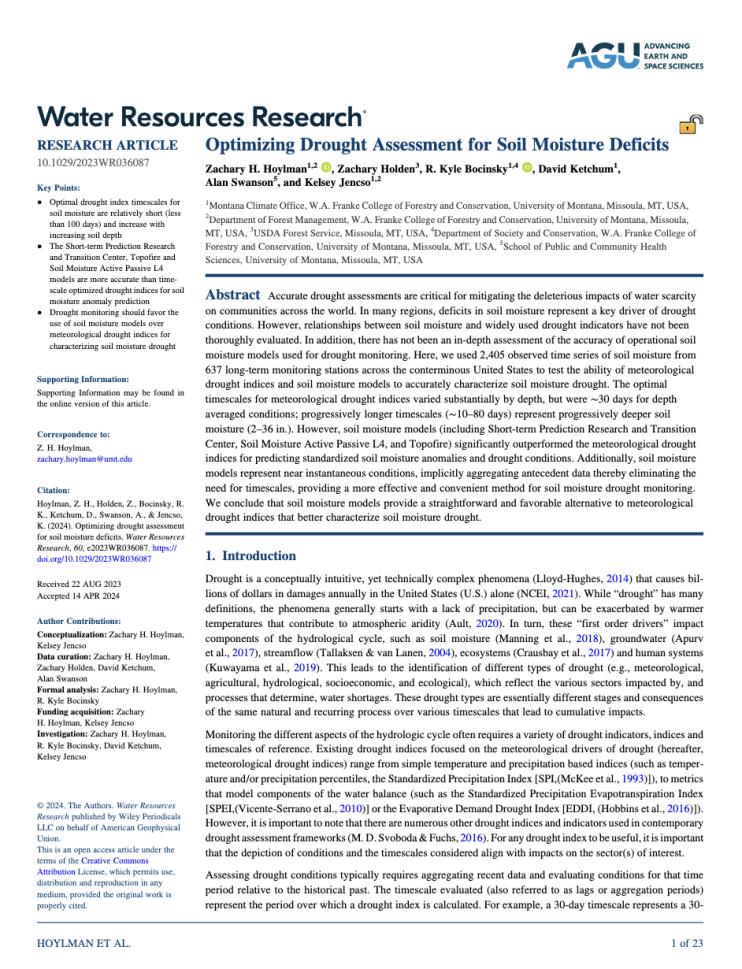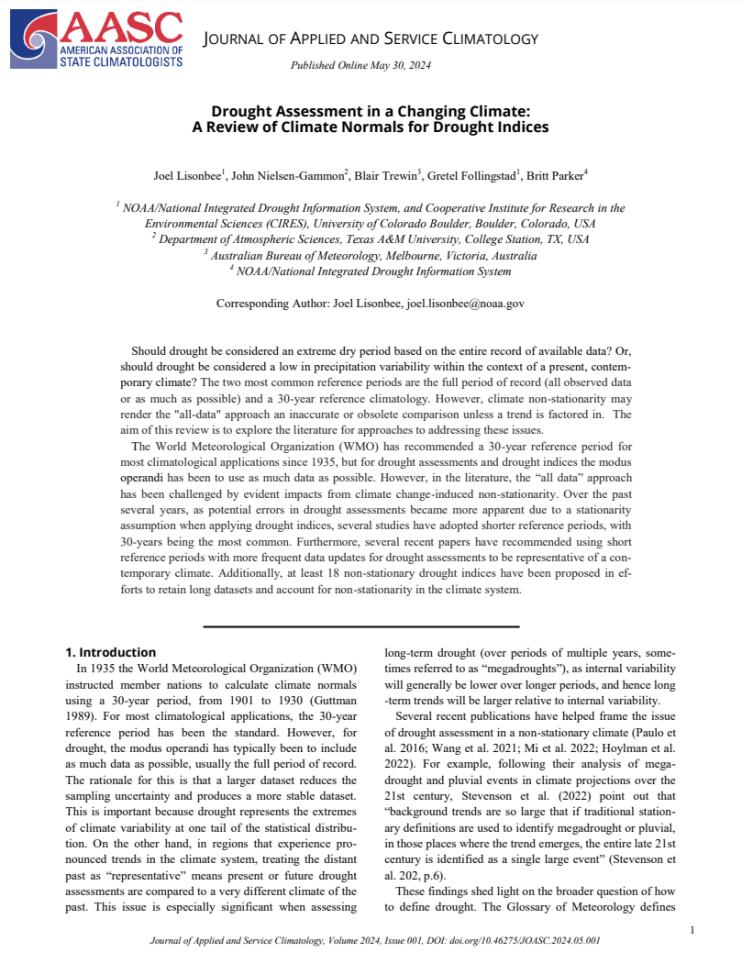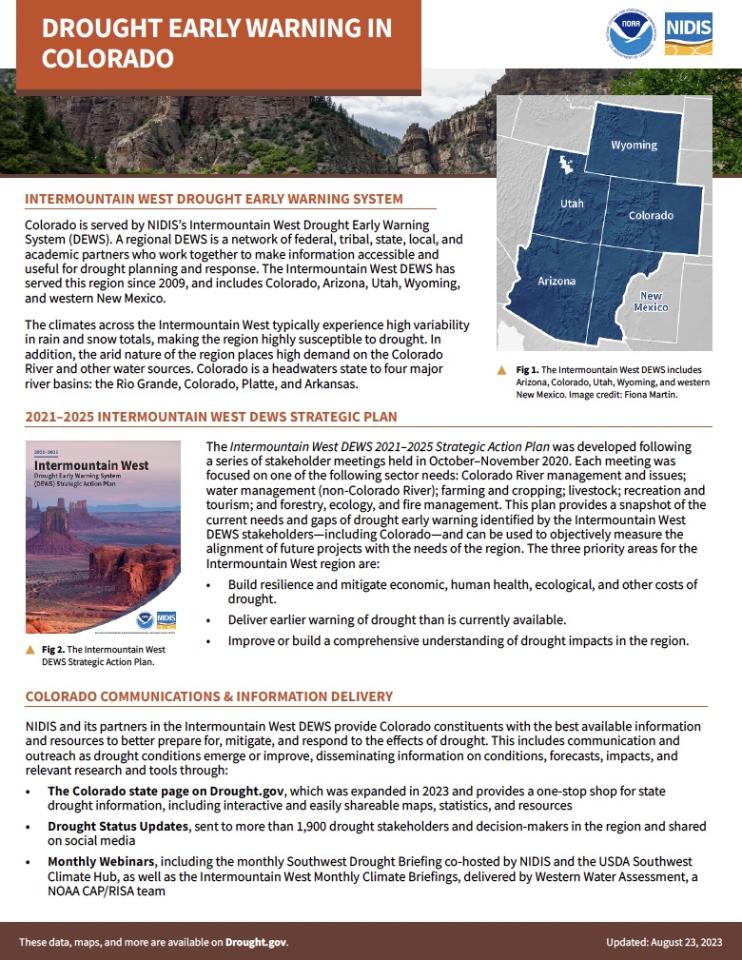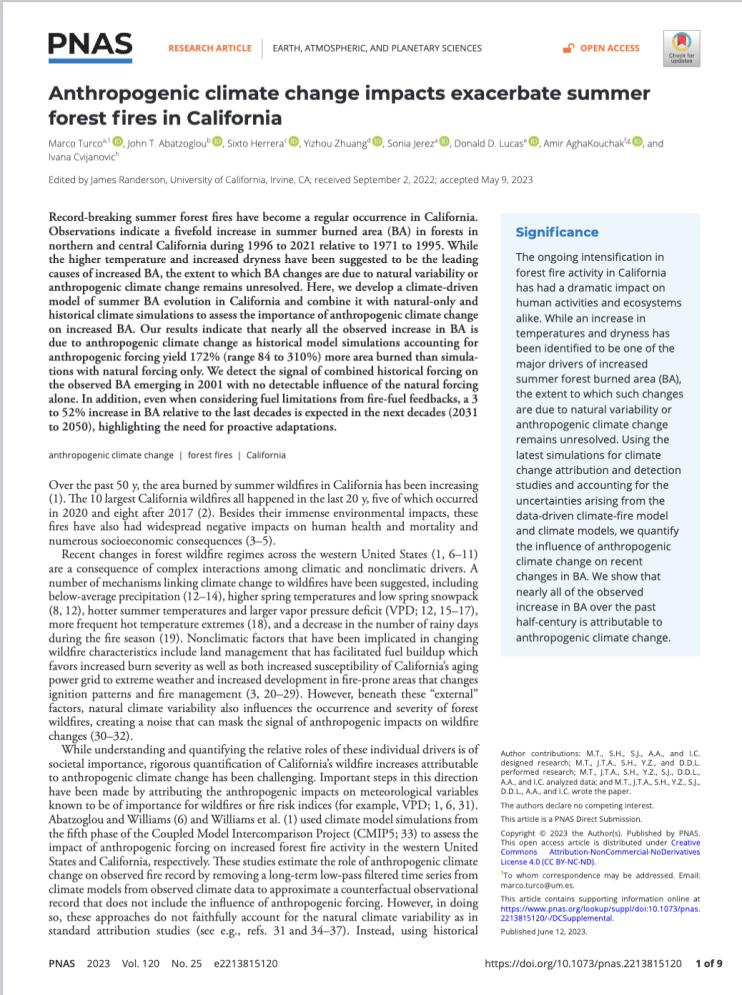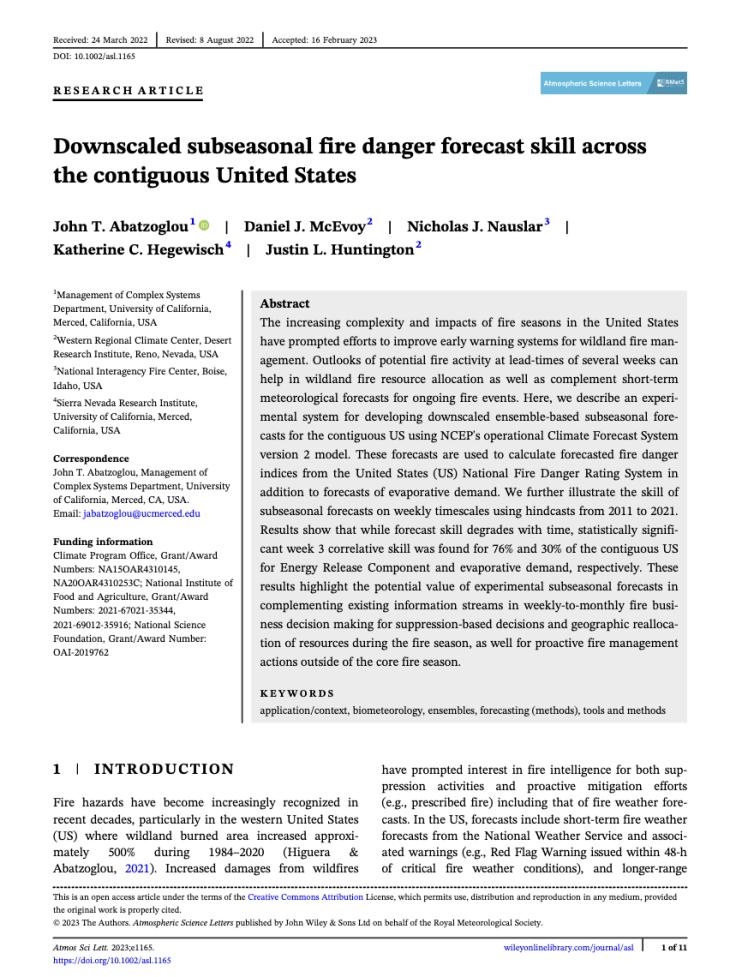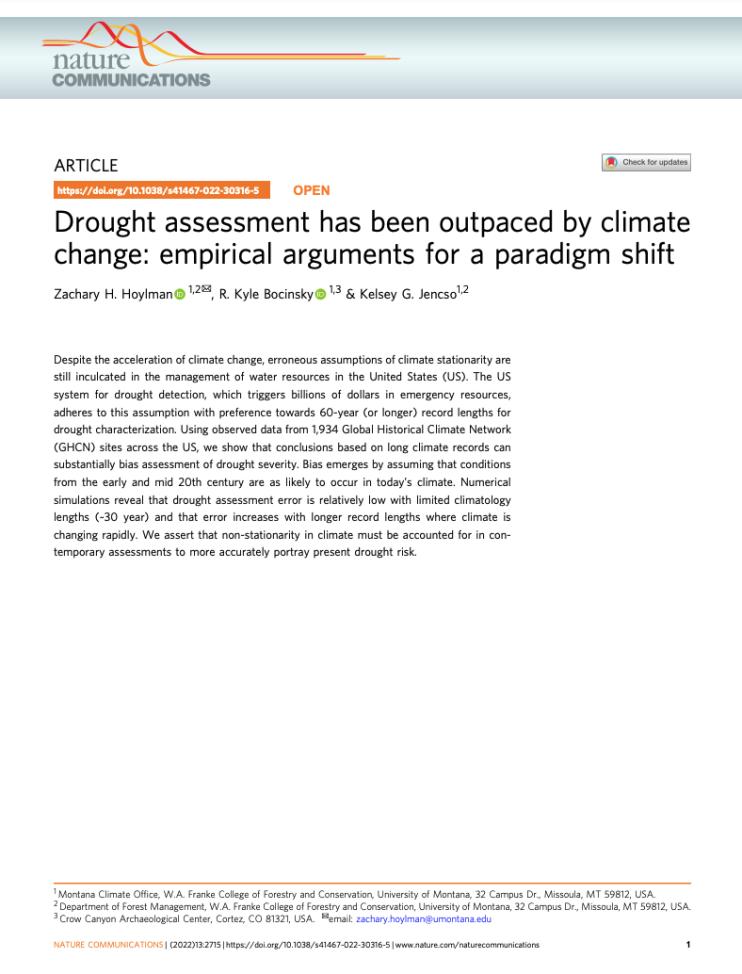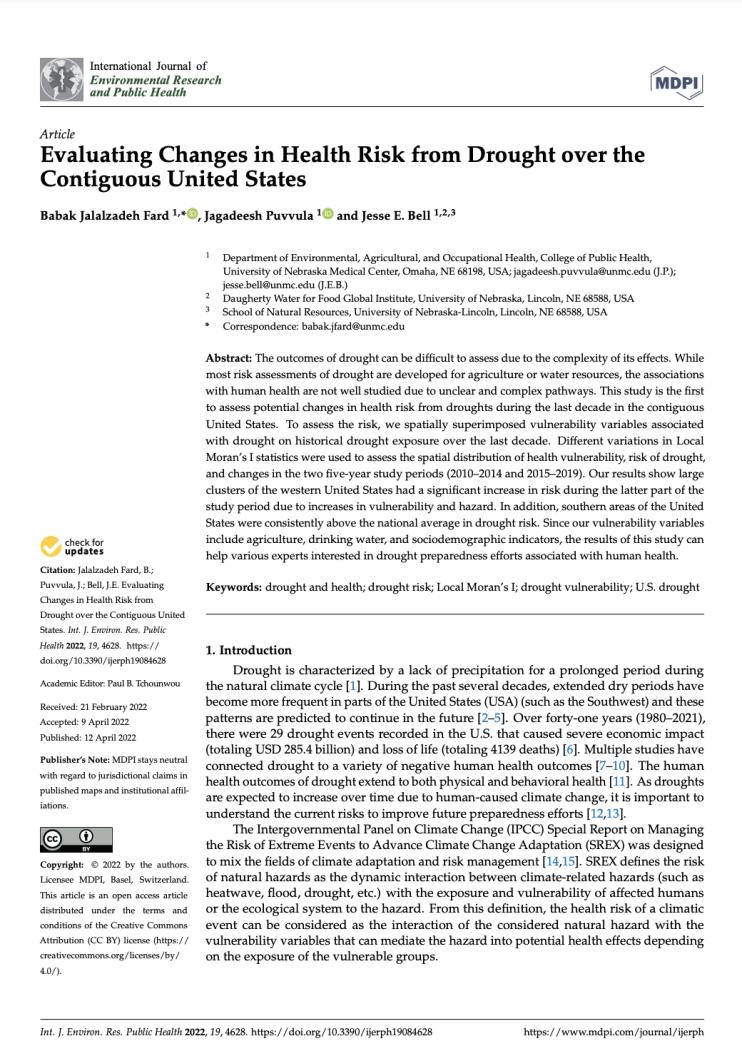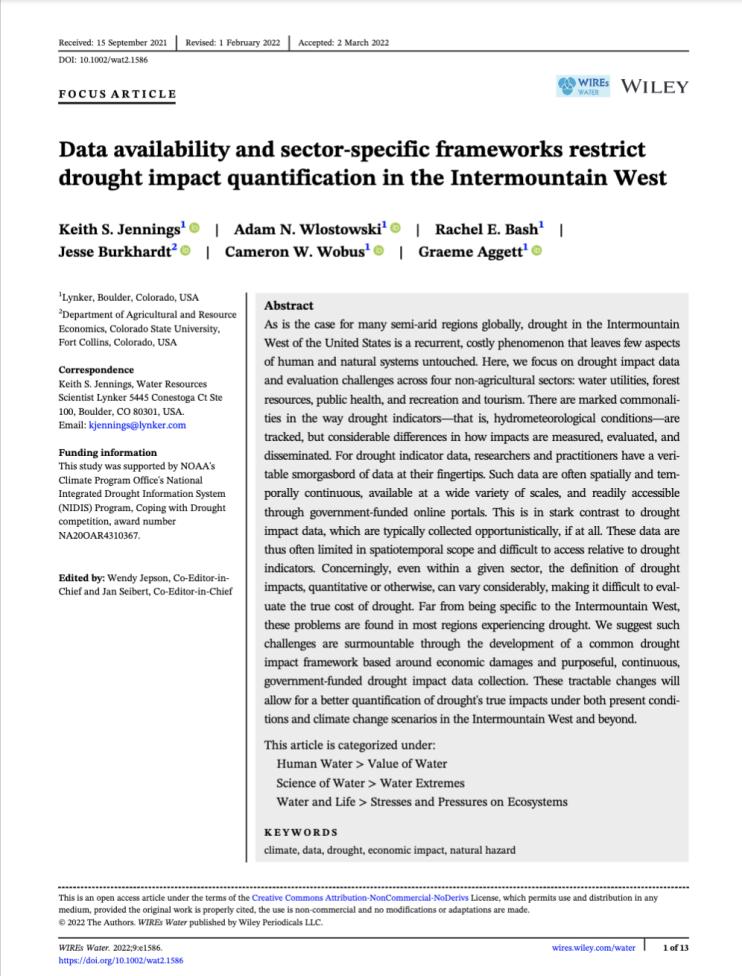This NIDIS-funded study, led by researchers at the University of Colorado Boulder/Cooperative Institute for Research in Environmental Sciences (CIRES), found that future hydrologic droughts are projected to become more severe and prolonged through the 21st century. This includes more frequent multi-year droughts. These storylines play out differently under different emissions scenarios, but seasonal shifts in drought timing were prominent in northern latitudes across all future scenarios.
This NIDIS-funded study, led by researchers at the University of Colorado Boulder/Cooperative Institute for Research in Environmental Sciences (CIRES), identified challenges in predicting seasonal water supply during drought years in snow-dominated basins of the western United States due to climate warming.
Accurate drought assessments are critical for mitigating the detrimental impacts of water scarcity on communities across the world. In many regions, deficits in soil moisture represent a key driver of drought conditions. However, relationships between soil moisture and widely used drought indicators have not been thoroughly evaluated.
Should drought be considered an extreme dry period based on the entire record of available data? Or, should drought be considered a low in precipitation variability within the context of a present, contemporary climate? The two most common reference periods are the full period of record (all observed data or as much as possible) and a 30-year reference climatology. However, climate non-stationarity may render the "all data" approach an inaccurate or obsolete comparison unless a trend is factored in.
Colorado is served by NIDIS's Intermountain West Drought Early Warning System (DEWS). A regional DEWS is a network of federal, tribal, state, local, and academic partners who work together to make information accessible and useful for drought planning and response. The Intermountain West DEWS has served this region since 2009, and includes Colorado, Arizona, Utah, Wyoming, and western New Mexico.
This article in Earth, Atmospheric, and Planetary Sciences was the result of NIDIS-supported research. Learn more about this research.
The increasing complexity and impacts of fire seasons in the United States have prompted efforts to improve early warning systems for wildland fire management. A NIDIS-funded study led by the University of California-Merced demonstrated that subseasonal forecasts of fire danger from an experimental forecast system have significant skill at up to 3-weeks lead time across the contiguous United States.
Despite the acceleration of climate change, assumptions of a stationary climate are still incorporated into the management of water resources in the U.S., with a preference towards 60-year (or longer) observation record lengths for drought characterization. Bias emerges by assuming that conditions from the early and mid-20th century are as likely to occur in today’s climate.
This study, led by researchers from the University of Nebraska Medical Center and published in the International Journal of Environmental Research and Public Health, assessed "potential changes in health risk from droughts during the last decade in the contiguous United States."
This study, published in WIREs Water, volume 9, issue 3, was funded by NIDIS through the FY 2022 Coping with Drought research competition.
Learn more about this research: Developing Drought Impact Models for the Intermountain West Drought Early Warning System.


